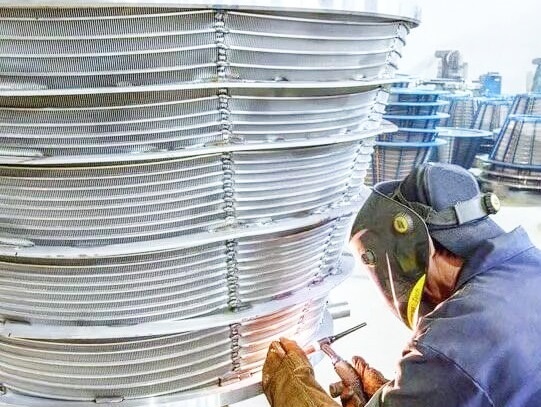The production of wedge wire centrifuge baskets involves several key technologies and manufacturing processes. Here are the commonly used methods in the production of wedge wire centrifuge baskets:
Wire Selection: High-quality stainless steel wires are selected as the raw material for manufacturing wedge wire baskets. The choice of wire material depends on the specific application requirements, considering factors such as corrosion resistance, temperature resistance, and mechanical strength.
Wire Forming: The selected stainless steel wires are formed into wedge-shaped profiles. This process is typically achieved through specialized wire forming machinery. The wedge-shaped wires are accurately shaped to create narrow openings for effective filtration.
Support Rods: The wedge-shaped wires are then joined to support rods, which provide structural integrity and support to the basket. The support rods are typically made of stainless steel and are welded or connected to the wedge wires.
Welding/Joining: The joining of the wedge-shaped wires to the support rods/rings is an essential step in the production process. The resistance welding are commonly used to create strong and durable connections.
Slot Size Customization: The slot size of the wedge wire basket is critical for achieving the desired filtration performance. Slot size customization is typically achieved through precision machining . The slot size is determined based on the specific application requirements, considering the particle size to be filtered and the desired filtration efficiency.
By employing these production technologies and processes, wedge wire centrifuge baskets are manufactured to meet the high standards and specifications required for efficient solid-liquid separation in various industrial applications.
